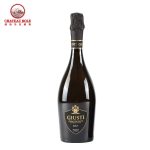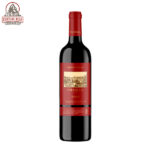Veneto
The Veneto region is a substantial and increasingly important wine region in the northeastern corner of Italy.
To learn more about Veneto, please read on. If you’re interested to find more wines from this region, then scroll to the bottom of the page.

Veneto is slightly smaller than Italy’s other main wine-producing regions – Piedmont, Tuscany, Lombardy, Puglia and Sicily – yet it generates more wine than any of them. Although the southern regions Sicily and Puglia were for a long time Italy’s main wine producers, this balance began to shift north towards Veneto in the latter half of the 20th Century. In the 1990s, southern Italian wine languished in an increasingly competitive and demanding world, while Veneto upped its game, gaining recognition with such wines as Valpolicella, Amarone, Soave and Prosecco.
The Veneto region can be roughly split into three geographical areas, distinguished by their topography and geology. In the northwest the foothills of the Alps descend along the eastern edge of Lake Garda, their path mirrored by the Adige river as it descends from the heights of Alto Adige. Here in the cooler, alpine-influenced climate, fresh, crisp whites are made under the Bianco di Custoza and Garda titles, while refreshing, unassuming Bardolino from the shores of Lake Garda makes the case for Veneto’s lightest reds.
Just east of the lake and north of Verona is Valpolicella and its sub-region Valpantena; the fabled “Valley of Many Cellars” produces 500,000 hectoliters of fruity red wine each vintage. In terms of production volume, Valpolicella is the only DOC to rival Tuscany’s famous Chianti.
Corvina, Corvinone (for a long time confused with the former though they have distinct DNA profiles) and Rondinella are behind the vast majority of reds, with Molinara falling out of favor.
Immediately east of Valpolicella is Soave, home to the eponymous dry white wine that now ranks among Italy’s most famous products. Beyond that, Gambellara serves as an eastern extension of Soave, both geographically and stylistically. Garganega and Trebbiano are the key white wine grape varieties here.
In central Veneto, around Vicenza and Padua, are the Colli Berici, Colli Euganei and Breganze. Although the plains below these hills produce vast quantities of wine, only the better quality wines from more elevated areas have gained DOC status. International varieties such as Merlot, Cabernet Sauvignon, Cabernet Franc, Pinot Noir (Pinot Nero here) and even Carmenere have proved successful here, as has northern Italy’s flagship white Pinot Grigio and Tocai Friulano.
In the northeastern corner of the region, on either side of the Piave river (which has its own Piave DOC covering the land between Conegliano and the coast), sparkling Prosecco reigns supreme. Still wines are also made here (Lison, Lison-Pramaggiore, Montello e Colli Asolani and Colli di Conegliano), but the common factor that unites almost all viticultural zones in northeastern Veneto is the Glera grape (typically known as Prosecco), and the foaming spumante and semi-sparkling frizzante wines it creates.
The Vs of Veneto have certainly made their mark on this era of wine history. The names Veneto, Verona, Vicenza, Valpolicella, Valpantena and Valdobbiadene have emerged with vigor into the 21st Century, and now even the historic canal city of Venice has its own DOC (Venezia)
Showing 1–9 of 12 results














